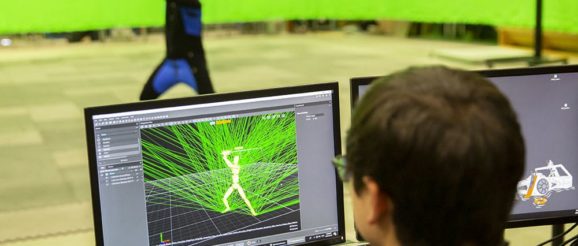Sheridan Levels Up CG Character Innovation with Major Federal Grant | Animation Magazine

The Canada Foundation for Innovation (CFI) has awarded Sheridan College with a grant of $995,877 to purchase equipment needed to advance pioneering work related to the creation of believable and engaging virtual characters – especially virtual humans – for all types of screens including cinema, television, mobile devices and immersive interactive displays, such as virtual and augmented reality.
William Amos, Parliamentary Secretary to the Minister of Innovation, Science and Industry announced the grant at an event held at Cégep de Trois-Rivières today, celebrating CFI’s investment in seven projects for innovative research happening at six colleges across Canada through its College-Industry Innovation Fund (CIIF).
“This project is a perfect demonstration of our unique research identity,” says Dr. Janet Morrison, President and Vice Chancellor of Sheridan. “It engages our faculty and students with industry and community partners in a wide array of projects that span our academic strengths in the arts, technology, social sciences, applied health and community studies – all with a view to supporting innovation in the screen-based, creative industries for the benefit of private industry and society.”
Sheridan’s project is called Virtual Humans and the Creative Industries. It builds on Sheridan’s globally recognized excellence in the screen-based industries, including its multi-year cluster of virtual human research projects involving media companies already underway, spearheaded by its Screen Industries Research and Training Centre (SIRT).
Virtual humans are computer-generated human characters that are found in animated and visual effects-based productions. They can use language, enact human gestures, show emotion and react to verbal and non-verbal cues. The project will support advances within these areas, particularly in virtual production processes. It will also enable new types of interactive and immersive storytelling. Beyond media and entertainment, interactive virtual humans can contribute to social and individual well-being, through applications related to health care, education, and cross-cultural understanding.
Critical components made possible by the funding will further enhance advanced infrastructure at SIRT’s Pinewood Toronto studio, strengthening its capacity as a federally designated Technology Access Centre serving the screen industries. It will also allow Sheridan to acquire and install equipment at other campus locations, enabling an integrated suite of leading-edge technologies required for:
The technology will enable collaboration among distinct programs at Sheridan, such as Interaction Design and Game Design and Sheridan’s Research and Incubation Centres including its Centre for Elder Research and Centre for Mobile Innovation. SIRT is already working with another Research and Incubation Centre at Sheridan — the Canadian Music Theatre Project — on an initiative with the National Ballet of Canada and the Canadian Opera Company that will be further supported by this equipment.
“This project will enable private sector firms to gain technical skills, adopt new technology, commercialize innovations, create jobs and increase revenues within a globally competitive market,” says John Helliker, Dean of Innovation at Sheridan.
“Virtual characters and virtual humans are also being integrated with person-to-person delivery of services by caregivers, teachers, public servants and other professionals through believable simulated scenarios for training and educational purposes,” adds Helliker. “Sheridan’s project will provide opportunities for social innovation research by enabling the creation of individualized, context-aware, autonomous social interactions.”
Examples of such opportunities include virtual human home services for the elderly or isolated, or gaming scenarios that assist patients to recover more quickly post-surgery or to continue to rehabilitate at home.
www.sheridancollege.ca
